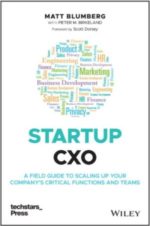A Better Way to Shop
A Better Way to Shop
I love Zappos.com. It’s rapidly becoming the only place I buy shoes. Their web site experience is ok – not perfect, but pretty good, but their level of service is just unbelievable. They are doing for e-commerce (shoes in particular) what Eos is doing for air travel.
They’re always great at free shipping and have always been super responsive and very personal and authentic when it comes to customer service. But today took the cake. I emailed them when I placed an order for new running shoes because I also wanted to buy one of those little “shoe pocket” velcro thingies that straps onto shoelaces and holds keys and money for runners. I didn’t find one on the Zappos site and just asked if they carried the item in case I missed it.
Less than 24 hours later, I got an email reply from Lori, a Customer Loyalty Representative there, who apologized for not carrying the item — and then provided me with a link to buy it on Amazon.com which she had researched online herself.
Zappos’s tag line on their emails says it all:
We like to think of ourselves as a service company that just happens to sell shoes.
Does your company think of itself and its commitment to customer service like that?
Seth Responds
Seth Responds
About an hour after I posted a not so flattering review of Seth Godin’s new book this morning, I got an email from Seth with a couple good points worth responding to here.
His main points (other than offering me a refund, which was nice) were that (a) the book itself was very clear about its content — on the book itself (back cover, inside flap, marketing copy), kind of like a ‘live album’ for a recording artist; and (b) if I thought the blog postings were worthwhile, why did I still feel like there was a downward trend in his writing?
Ok, so these are fair points. Let me try to clarify. I am 99% sure that I bought the book off the Amazon.com email which said “if you enjoyed other books by Seth Godin, then here’s his latest,” which prompted my robotic one-click order without paying attention to the fine print. That’s why I was disappointed when I got the book. My bad, I guess, although that’s somehow an unsatisfying thought as a consumer — that I should have paid more attention to the fine print. Live albums from musicians usually have that in the title so the marketing is clear, and they still sell a ton, probably even more so.
In re-reading my review, I actually think it’s balanced — I do say there are a bunch of circumstances where the book is a must-have — but my use of the word “sell-out” was a bit harsh given the attempts to present the book as a compendium. But the downward trend in my mind is more than just this book. I think a lot of Seth’s writings have been hitting the same notes for the last couple of years, while I’ve been hoping to hear his next Big Moo.
I didn’t take up Seth’s offer for a refund, as I fall somewhere between (a) and (c) in my definition of why this is a must-have. And while I’m at it, maybe I should rethink my earlier point that this whole blog thing isn’t about conversations.
Book Shorts: One Up, One Down
Book Shorts: One Up, One Down
I read new books by two of my favorite authors today: Geoffrey Moore and Seth Godin. Moore’s was his best book in years; Godin’s was his worst.
Geoffrey Moore’s latest book, Dealing with Darwin: How Great Companies Innovate at Every Phase of their Evolution, is Moore’s best book in a while. While I loved Crossing the Chasm and thought Inside the Tornado was a close second, both The Gorilla Game and Living on the Fault Line didn’t do it for me — they both felt like a pile of Silicon Valley buzzwords as opposed to the insightful and groundbreaking market definition in his first two books.
But Darwin is a gem. It goes back to Moore’s strengths in analyzing leading companies and creating a powerful framework for innovation that transcends industry and stage of company. And even better, the book has a few very useful “how to” lists to help readers interpret the content and adapt it to their own environments.
So whether you’re a Geoffrey Moore fan or not — assuming you are a fan of innovation and kicking your competitors’ collective butts — this book’s for you.
By contrast, Seth Godin’s Small Is the New Big is old news if you are a Seth Godin fan. It is literally a repackaging of essays, articles, and blog postings he’s written over the years. He’s trended down lately in his writing, like Moore (and most authors who have a single theme or two, it should be said), but unlike Moore, this book isn’t his recovery. The book is a must-have if you (a) love Seth’s writing and want a hard copy archive of his soft-copy stuff, (b) you don’t read Seth’s blog and want to see what you’ve been missing, or (c) you have his other books and are compulsive enough that you can’t stand incomplete collections.
Otherwise, wait for his next book, which hopefully will have some more of the original thinking and writing and ideas that made books like Permission Marketing, Unleashing the Ideavirus, and Purple Cow such new business classics. I have to say, the thing that disappointed me most here is that I felt like Seth totally sold out with this book — as a regular reader of his, I just felt duped by the Godin Marketing Machine, which is precisely the kind of thing he rants against. There was definitely NO Free Prize Inside this one.
How to Crush Your Competition
How to Crush Your Competition
My friend Karl used to call this the “embrace and extend” theory of competition, and when it works, it’s brilliant. I just found a new example of it yesterday (thanks, Jack!) that’s very illustrative.
I have been a Firefox user for a couple years now and love the browser and its extensions. I almost never use Internet Explorer any more — although sometimes I “have to,” because there are a couple of web applications I use that just don’t work well in Firefox, like Outlook Web and online banking. Hopefully some of that will change over time as Firefox gets more mainstream, but in the meantime, there’s now a Firefox extension that allows you to open certain web pages in Internet Explorer — within Firefox. I’m not sure how it works technically, and I’m not sure I care, but basically, the new tab that opens with the designated web sites has the little Microsoft “e” as the icon on the tab, and voila — the sites work perfectly using the Internet Explorer engine within Firefox. So now I never have to open up Internet Explorer again.
Score one for Firefox on the competition front. How can you apply this kind of competitive framework to your business?
Here’s the link to download the extension, then once it’s installed and you’ve restarted the browser, simply go to the Tools menu and then the IE Tab Options link to add the URLs you need to add.
Book Short: And It’s Not Just Because I’m In It
Book Short: And It’s Not Just Because I’m In It
Debbie Weil’s The Corporate Blogging Book is a good super quick read for any CEO or senior executive who is contemplating starting a blog — or even better, for those who have decided not to do so.
Weil’s writing style is great and very informal (blog-like, in fact) – a representative snippet is where she tells readers that there are two types of information to worry about posting on a blog, in her words, “stuff you don’t to reveal and stuff you could get sued for.” And her range of topics is great and deals with issues head-on. Things like fear of losing control, time commitment, and ghost writing are all well covered.
Chapter 8 also includes a great Cliff’s Notes guide to web 2.0 technologies — RSS, podcasting, wikis, tagging — which is useful if you still Feel Like a Luddite about those things.
I did contribute a couple interviews to the book, as did most of the other oft-cited CEO bloggers like Mark Cuban and Jonathan Schwartz in whose company I am somewhat embarrassed and humbled to be. But don’t let that deter you from picking up a copy if you are in the target audience!
Tech on the Brain
Tech on the Brain
I heard a good one today — a really good one. A friend of a friend (who of course shall remain nameless) was at a stoplight the other day in front of a big Victoria’s Secret store with a big sign out front advertising their newest product — Wireless Bras. Anyway, this friend sat there for a full traffic light cycle trying to figure out why the heck you’d need a bra that’s wi-fi enabled, and how you’d hook it up to a computer monitor or laptop to take advantage of the feature.
Fortunately, it did eventually dawn on this person that this was an ad that referred to the absence of physical support wires, not EVDO or 80211.g standards or a home LAN. I’m sure there’s some awful off-color joke here involving either the word Bluetooth or the term backwards-compatible, but I’ll leave that to your imagination.
Getting Good Inc.
Getting Good Inc.
There’s an old saying in PR about “getting good ink,” referring to good press – a phrase that will probably replaced by something like “getting good bits” soon enough now, I’m sure.
Anyway, Return Path was very fortunate to be ranked #167 in this year’s Inc. Magazine Inc. 500 list of the fastest growing private companies in America. See the list here and our press release here. We were also happy to see clients of ours like Constant Contact, Fishbowl, and Zappos on the list, as well as fellow email companies Exact Target, Vertical Response, and research panel Epocrates. That’s all the sign of a healthy industry!
While we never rest on our laurels, it’s certainly nice to take a moment and reflect on the great growth we’ve had in the business the last few years and celebrate the public recognition. I’d personally like to thank our customers, our investors, and most of all, our hardworking employees (now 100 strong!) for getting us here.
Now our challenge, of course, is STAYING on the list, and hopefully upping our ranking next year!
People are People
People are People
So after nearly seven years of running Return Path, I think it’s now fair to say that I’m a direct marketer. I’ve learned a lot about this business over the years, and there are a number of things about direct marketing that are phenomenal — the biggest one is that most of the business is incredibly clear, logical, and math-driven. But there’s always been one thing about the field that hasn’t quite made sense to me, and I think it’s because the Internet is once again changing the rules of the game.
There are traditional companies in the space that focus on B2C direct marketing. There are others that focus on B2B. It’s been obvious to me for years that there was a huge cultural or perceived divide between these types of companies. You can see it in the glazed over eyes and hear it in the scratchy voices of long-time industry members from the postal and telemarketing world — "Ohhh," they say, "they’re a B2B company. We don’t do that."
But the distinction between B2B and B2C is rapidly diminishing. I may not want a telemarketing call about office supplies on my home number or one about car insurance at work (or any of them at all!). It might not make sense to send me a catalog for routers to my home. I get that. But at the end of the day, people are people, and the ubiquity of the Internet is eroding distinctions between the different places I spend time.
True, most of us do have multiple email addresses, and some are company-sponsored while others are personal. But how many of us have all that email coming into the same mailbox in Outlook? Or if we do have a Yahoo or Hotmail or Gmail account, how many times per day do we check it from the office? Is an @aol.com account a B2C account? I don’t know – AOL says there are hundreds of thousands of small businesses who use AOL. Is an @ibm.com account a B2B account? It’s probably someone’s work account, but how many times does he check that account on his Treo over the weekend? And what if it’s that person’s only email address?
Sure, you’ll want to use different media properties or lists to acquire corporate buyers vs. individuals. Sure, there are still some nuances of data collection in the distinction as well (no reason for LL Bean to ask you for your title), and there will always be differences in creative and copy to drive response for a corporate buyer vs. a personal buyer. But the legacy distinctions between B2C and B2B are definitely melting away.
So I’m not accused of being Internet-myopic, this same principle (or a related one) explains why you see ads like crazy for FedEx and DHL during The Office on NBC. I had this quote written down from several months back for which unfortunately I don’t have attribution, although I’m pretty sure it was a media buyer in a Wall Street Journal article, who said, "The best time you can reach people is when they’re in their entertainment mode and consuming media they really want to see when they’re in their down time. And that might not be CNBC, that might be My Name is Earl on NBC."
links for 2006-08-17
-
Tom Evslin’s entertaining Top 10 Ways You Know You’re an Entrepreneur. Some may dovetail nicely if I ever write up my read of The Fountainhead through entrepreneurial lens!
Solving an Annoying Windows "Feature"
Solving an Annoying Windows "Feature"
I was just about to write a quick rant on how ANNOYING it is when Windows downloads a software update and then automatically reboots your computer, shutting down all your open documents and windows and causing you to lose work, when our ace system administrator, Tom Nguyen, told me how to disable the auto-reboot feature. It seems that Windows has been doing this more and more frequently lately, and I’ve heard this as an issue from others as well. So for anyone else who is wondering how to do this, Tom says:
Option 1. Click on the Start menu>Control Panel>Automatic Updates>Notify me but don’t automatically download or install them.
Option 2. XP prior to Service Pack 2
Back up your registry, then add or change this key:
HKEY_LOCAL_MACHINE\ Software\ Policies\ Microsoft\ Windows\ WindowsUpdate\AU If it doesn’t already exist, create the DWord value “NoAutoRebootWithLoggedOnUsers”. Set it to 0 if you want Windows to automatically restart, or 1 to prevent automatic restart. Then exit and reboot your computer. The result: As long as you are logged on the system, it won’t take matters into its own hands.Option 3. Post-XP SP2,
Disabling Windows Automatic Updates;
Opening Task Manager (by pressing Ctrl-Alt-Del); Ending all instances of wuauclt.exe, then; Making the registry changes noted above. Once Service Pack 2 is installed, XP Pro, 2000 and 2003 users can stop automatic reboots by editing Group Policy. Start the Group Policy editor, select Windows Update in the Windows Components portion of the Administrative Template, and choose No auto-restart for scheduled Automatic Updates installations. You can also completely disable Windows Update at the Group Policy or User level.
Feels like Option 1 is the DIY option, and the other two are better left for the professionals!
Book Short: It Sounds Like it Should be About Monkeys, Doesn’t It?
Book Short: It Sounds Like it Should be About Monkeys, Doesn’t It?
The Long Tail, by Chris Anderson, is a must-read for anyone in the Internet publishing or marketing business. There’s been so much written about it in the blogosphere already that I feel a little lame and “me too” for adding my $0.02, but I finally had a chance to get to it last week, and it was fantastic.
The premise is that the collapsing production, distribution, and marketing costs of the Internet for certain types of products — mostly media at this point — have extended the traditional curve of available products and purchased products almost indefinitely so that it has, in statistical terms, a really long tail.
So, for example, where Wal-Mart might only be able to carry (I’m making these numbers up, don’t have the book in front of me) 1,000 different CDs at any given moment in time on the shelf, iTunes or Rhapsody can carry 1,000,000 different CDs online. And even though the numbers of units purchased are still greatest for the most popular items (the hits, the ones Wal-Mart stocks on shelf), the number of units purchased way down “in the tail of the curve,” say at the 750,000th most popular unit, are still meaningful — and when you add up all of the units purchased beyond the top 1,000 that Wal-Mart can carry, the revenue growth and diversity of consumer choice become *really* meaningful.
The book is chock full o’ interesting examples and stats and is reasonably short and easy to read, as Anderson is a journalist and writes in a very accessible style. You may or may not think it’s revolutionary based on how deep you are in Internet media, but it will at a minimum help you crystallize your thinking about it.




